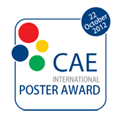
| |
EnginSoft - CAE Conference Abstracts
EnginSoft International Conference 2011 |
MELiSSA Project: Plant Growing Environment Characterization |
Bucchieri Lorenzo - EnginSoft (Italy) |
Abstract |
In past and current space missions physiochemical life support systems were sufficient to provide air and a limited amount of water to the crew, while food and drinkable water was re-supplied and wasted discarded. As human missions extended further into space, physiochemical and biological processes are likely to be combined to achieve a highly self sustained and robust regenerative life support system. The European project MELiSSA aims to study and advance technology for a future life support system required for long term manned missions. A crucial role in the study of life support systems is played by the plant growing environment which requires an in-depth model development activity. Typically, plant growth chambers used for plant physiology research suffer from a degree of environmental parameter heterogeneity which could affect the yield in quality and quantity. Depending on light intensity, temperature or air mixing rate individual crops display different growth rates and composition at a given sampling time. The modeling of the chamber hardware has the potential to give an insight into the phenomena leading to non-homogenous growing condition and to provide suggestions on how to mitigate it. As a partner of the Melissa consortium coordinated by ESA, the EnginSoft computational fluid dynamic (CFD) team developed calculation methods to simulate the transport of heat and mass in such a system and thus characterize the plant growing environment. Based on the high plant chamber (HPC) prototype located at the Universitat Autònoma de Barcelona (Spain), the CFD model was intended at first to reproduce the performance of the chamber without plants. The fluid dynamic efficiency of the air handling loop of the chamber was checked and maps of the environmental factors were used to detect problematic regions which are likely to generate stress for the plants once they are put in place. Changes of chamber design changes were also evaluated. Next the plant evaporative load was added into the model by following a straight approach integrating evapotranspiration, carbon dioxide assimilation and oxygen production by the use of empirically fitted figures derived from experimental data. Finally the CFD simulations provided important indications for the set up of the chamber control system. Indeed CFD results were used to determine the technical specifics of the probes and to identify the optimal position for the measurements. Thanks to the modeling activities performed within the Melissa project framework a considerable reservoir of competence is now available regarding the characterization of the plant growing environment. |
Back to index |



